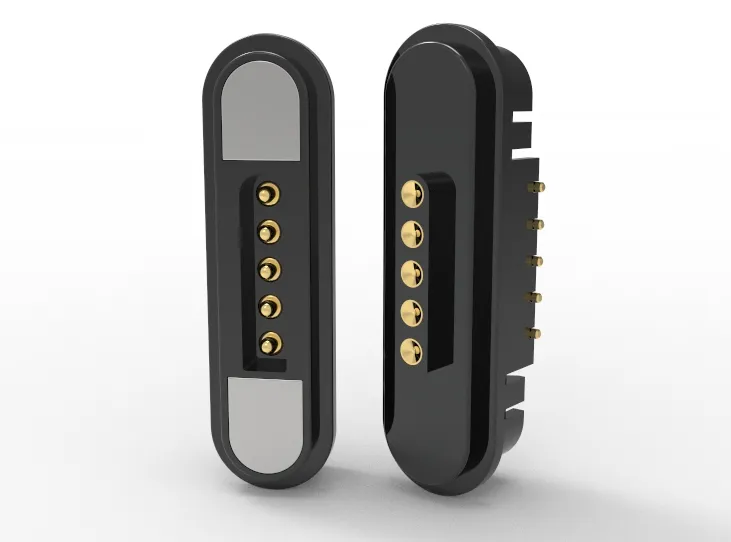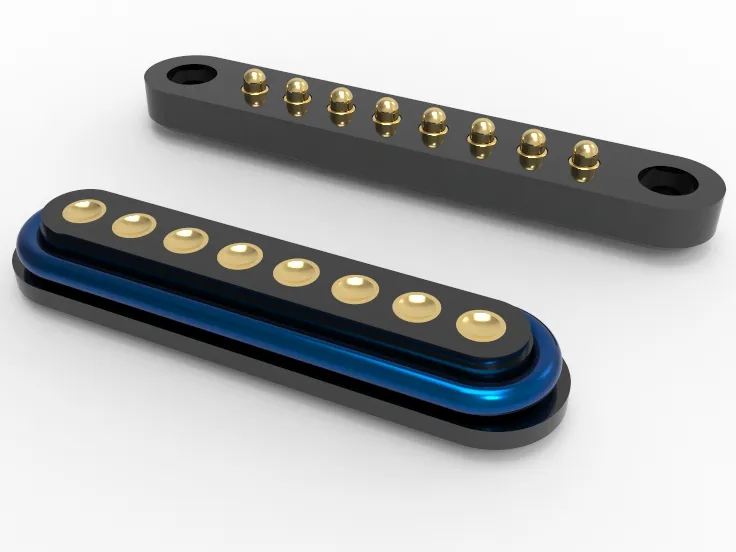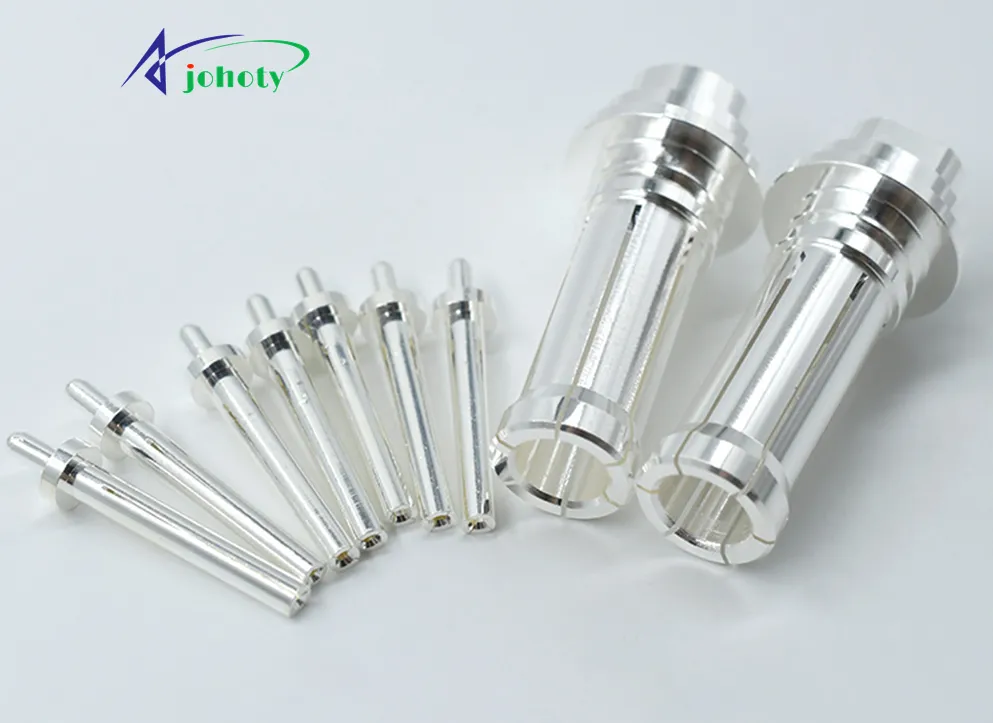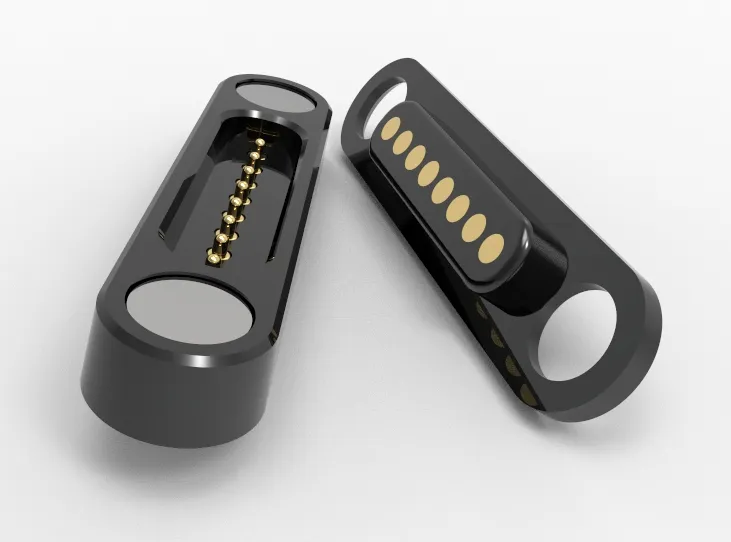Life Cycle Data Decoded: Pogo Pin Connector Durability to 200K+ Cycles. Material Comparison, Failure Analysis & Maintenance Hacks for Engineers
Introduction: Engineers Work Late Nights Due to Insufficient Connector Life Cycle
The connector is critical in POC and mass production of electronic products. Its role is often underestimated, however, engineers often face significant technical challenges when its life cycle is insufficient for high-frequency use. Have you ever had to work late at night to solve a malfunction caused by a bad connection due to the short life cycle of a connector? Have you fretted about the lack of contact life cycle in high-frequency use?
Every time a connector fails, it’s not a simple hardware failure. It hides huge hidden costs behind it: frequent component replacement, reduced productivity, increased maintenance costs, and unforeseen data shocks. All of these issues ultimately affect the overall quality and time-to-market schedule of the product, and even customer satisfaction and brand reputation.
Recently, Johoty’s pogo pins are becoming more and more recognized by engineers. How to make the life cycle of pogo pins reach 200K+ cycles has become a common request from engineers. Here, Johoty will delve into the effective ways to enhance the life cycle of pogo pins. Combined with real-world experience, Johoty always provides you with practical solutions. Help you to significantly reduce costs, improve product quality, and solve the long-term problem of connector life.
Read:20899 types of through hole pogo pins
Engineer’s Core Challenges:
Limited Cycle Life:
Connector life cycle is subject to physical wear and tear and struggles with high frequency usage. Many engineers have found that life cycle of a standard connector can suffer from poor contact or breakage after a few thousand cycles. This increases product failure rate, requiring frequent connector replacement and increased maintenance costs.
Poor Contacts and Signal Transfer Problems
In high-speed data transfer and complex circuits, engineers are concerned about the quality of connector’s contacts. Once contact surface is worn or appears loose, it will lead to signal loss. At the same time, voltage fluctuates and even triggers more serious equipment failures. Engineers are constantly faced with how to maintain stable, efficient electrical connections.
Durability under High Load Environments
For equipment that operates under extreme temperatures, humidity, or vibration, ordinary connectors do not provide sufficient durability and stability. Engineers need to find solutions that will continue to reliably work under these demanding conditions. It is common to contact Johoty to customize pogo pins or pogo pin connector to ensure equipment long-term reliability.
Consistency and Quality Control
In mass production, there may be quality variations in connectors from one production lot to another. That is, the factory production line or NPI always face common connector performance inconsistency. R&D engineers often need to face how to ensure that each connector can meet high standard of quality requirements. To avoid production stoppages and product returns caused by quality fluctuations.
Read:17235 types of SMT pogo pins
Failure Factors Affecting Life Cycle
Elastic Fatigue
The Pogo Pin relies on an internal spring to achieve repeated compression/rebound action. However, during continuous high-frequency use, the spring material undergoes microstructural fatigue. Its elasticity gradually decreases, resulting in lower contact force and an inability to maintain stable contact. This cumulative deformation is often not apparent up front, but is a common source of failure early in the life cycle.
Fretting Corrosion
Under low amplitude, multiple contact conditions, small relative movements of the Pogo Pin against the contact surface can damage the surface layer of the metal. This causes a buildup of oxidized layers or corrosion products. These micro-motion corrosion products will significantly increase the contact resistance, resulting in signal noise, data loss, and ultimately connection failure. This is one of the most insidious but deadly problems in high-speed signaling environments.
Contact Topology Mismatch
The surface morphology, hardness and roughness of a connector or pogo pin contact head and its corresponding terminal are often poorly matched. This can cause localized contact, pitting, or stress concentrations, reducing the actual effective contact area. In high current or miniaturized designs, this surface topology incompatibility can accelerate material wear and shorten service life cycle.
Skin Effect
In high-frequency current transmission, the current tends to flow through conductor’s surface layer. If the Pogo Pin coating is of poor quality or insufficient thickness, it is easily degraded by localized heating, reducing conductivity. In addition, microscopic defects on the surface can form hot spots under the action of high-frequency electric fields, leading to localized ablation or failure. This often becomes a hidden danger that cannot be ignored in high-speed applications.
Particulate Contamination & Flux Residue
In an assembly or test environment, solder residue, dust, metal particles and other tiny contaminants can easily enter the connector or Pogo Pin contact area. These contaminants interfere with the contact, embedding themselves in the contact surface over multiple crimps and causing irreversible mechanical wear and signal interference. They often seriously affect the long-term stability of the connector.
Read:6331 types of high current pogo pins from 3A~1,200A
Johoty’s way to enhance pogo pin’s life cycle to 200K+
If you are having a headache on how to enhance pogo pin’s life cycle, Johoty will be your best choice. We enhance pogo pin’s life cycle to 200K+ through innovative technical means and professional customized services.
Material Selection and Optimization: Improving Durability and Corrosion Resistance
Johoty uses high performance brass, combined with gold and nickel plating, to effectively improve the corrosion and wear resistance of pogo pins. This significantly reduces micro-motion corrosion and contact surface wear, and improves the contact stability of pogo pins in high-frequency connections. In addition, Johoty offers customized material solutions for different application environments. As a result, pogo pins are able to operate stably in high humidity, vibration, and high temperatures.
Precision Design: Optimizing Contact Force and Contact Surface Topography
Johoty uses a precision design to optimize the spring system of the pogo pin to maintain consistent contact force during high frequency use. The spring is made of piano steel and stainless steel to avoid poor contact due to elastic fatigue. By precisely controlling the contact surface topography and surface roughness, Johoty ensures a perfect match between the pogo pin and the contact terminal. This reduces contact wear and current loss caused by mismatches and significantly improves connection stability and service life.
Read:441 types of threaded pogo pin
Surface Treatment Technology: Improvement of Wear and Oxidation Resistance
In order to prevent wear and tear on the surface of the pogo pin, Johoty applies advanced PVD coating technology on the pogo pin surface. Gold plating, palladium plating, platinum plating, or composite plating enhances surface’s hardness and wear resistance. Its antioxidant layer can effectively avoid poor contact due to oxidation under high frequency contact. We ensure that the connector can maintain long-term efficient transmission performance in harsh environments.
High Frequency Current Design: Optimizing the Current Skin Effect
Johoty pays special attention to the current skin effect in high frequency current transmission applications. By optimizing the contact surface design of the pogo pin, the current can be evenly distributed. This reduces heat buildup and surface abrasion caused by high localized current densities. In addition, Johoty offers specially designed pogo pins that can effectively suppress temperature rise at high frequency currents. We often control the temperature rise at 20°C, which reduces thermal degradation and performance degradation.
23 Steps of Quality Control and Consistency in Production
Johoty utilizes 23 precise quality control steps in the production process to ensure that every pogo pin meets the same high performance requirements. Whether it is material selection, design optimization, surface treatment and soldering processes, Johoty passes through a rigorous 23-step inspection process. The aim is to ensure the consistency and high reliability of our pogo pins and pogo pin connectors, and to avoid quality problems caused by batch differences. In addition, Johoty offers customized services to provide the most suitable pogo pin solutions according to customers’ different needs. This ensures that the pogo pins can achieve a life expectancy of 200K+ cycles in various applications.
Read:1536 types of double ended pogo pin
Case Study: Successful Life Cycle Enhancement to 200K+
During a project with a German connector company, engineers noticed that their pogo pin connector was experiencing significant contact failures after high frequency usage. Because the connector was used in a medical scrubber environment, connector stability dropped dramatically. Initially, they tried to improve it using traditional metal materials and coatings, but the results were not satisfactory.
The client teamdecided to introduce Johoty technology for pogo pin surface treatment and material optimization. We applied a fine composite coating to the contact points of the threaded pogo pins and reinforced the spring section. The life cycle of pogo pin was significantly extended from 50K cycles to over 200K cycles. It showed excellent wear resistance, corrosion resistance and high temperature stability in subsequent tests.
Ultimately, this technological breakthrough has helped client’s products gain a very high reputation in the market. It also effectively reduced the maintenance costs caused by connector failures and greatly enhanced customer satisfaction.
Read:1025 types of solder cup pogo pin
Conclusion: Solving Engineers’ Challenges, Increasing Life Cycle of Pogo Pins to 200K+
For engineer, ensuring pogo pins operate stably in a long-time, high-load environment is big challenge in design and production. Faced with frequent disconnections, performance degradation and short product life cycle, many engineers are constantly looking for solutions. So, how to effectively enhance life cycle of pogo pin to 200K+ cycles?
- Optimized material selection: Choose high-performance gold-nickel plating to greatly improve wear resistance and electrical conductivity of pogo pins.
- Precise Manufacturing Process: Precisely control size, tolerance and contact surface quality of pogo pins to minimize manufacturing errors. Ensure each pogo pin can be stabilized for a long time in high-frequency use.
- Improved spring design: Spring is one of core components of pogo pin, and high-strength, non-fatiguing spring material ensures that there will be no elastic failure after repeated insertion over a long time.
- Reduced contact force: Adjusting contact force ensures stable current conduction without causing damage to contact surface due to excessive force, thus prolonging life cycle.
- Environment optimization: Temperature, humidity and pollutants accelerate pogo pins aging. High protection level materials and design can effectively avoid negative impact of external environment on contact performance.
Through effective combination, pogo pin life cycle can exceed 200K, providing more stable and long-lasting support for high-end electronics. If you are facing problems with short connector life cycle and inconsistent performance, Johoty’s CFT Team can provide you with a customized solution. We have more than 20 years of experience and have accumulated a wealth of successful cases in optimizing pogo pin design and improving its performance. Johoty can provide you with the best technical and production support in material selection, design improvement, and life cycle testing. Contact Johoty today to solve your engineering problems and create more efficient products with longer life cycle!
Read:1377 types of right angle pogo pin
















